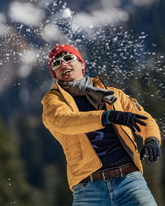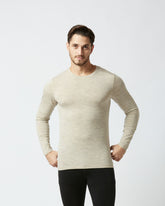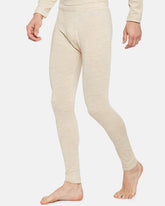Textiles and Embroidery of Kashmir
Textiles and embroidery of Kashmir are very unique. Often you must have heard “Heaven on Earth”, a title which the northernmost state of India has been relishing in for years. And every ounce of air in Kashmir makes a great case for it. Already endowed with a spectacle of natural beauty in all its magnificence, Kashmir is ranked first place in every travel list.
Apart from its natural beauty, there exists a beauty in the people of Kashmir. They carry with them a tradition so alluring and rich; it just cannot help but mesmerize the entire world. We are talking about the textiles, embroidery and thread of Kashmir!
The textile tradition in Kashmir has a glorious history of the world-renowned tapestry.
May it be the Kani shawls or the Amlikar needlework, even today the hand-woven textile products are a speciality of the many Kashmiri skilled weavers.
A visit to Kashmir is enough to fall in love with Kashmiri textiles of all kinds. This rich Kashmir embroidery is seen on salwar kameez, sarees, purses, dupattas etc.
Textiles and Embroidery of Kashmir
Kashmir’s historical background
In Kashmir, the earliest records of tapestry designs go back as far as the seventh century. In the sixteenth century Mughal period, however, there was a boom in the popularity of Kashmiri shawls in the country.

Primarily worn by Kings and royal courtiers, the uniquely gifted work of many weavers found its way beyond South Asia in this period.
It was only in the mid-1800s, the Kashmiri shawls became popular among the European elite, mainly the French. In the late eighteenth century, the industrial age appeared, which bestowed a certain global acknowledgement to this ancient art-form.
The fabric behind a great shawl
The shawls, which are known for their inimitable tapestry design, make use of a fibre commonly known among the natives as Pashm or Pashmina. The fibre normally comes from the fleece of a wild Cashmere Asian mountain goat known by its scientific name as Capra hircus.

The goat sheds its wool in the early days of June as the summer approaches, which gets stuck in the bushes and shrubs around the region.
Shawl-maker usually gathers this wool which is characterised by its exclusive properties, to make a good Pashmina shawl. The fibre is only 15 micron in thickness along with being extremely regular in structure, making it a perfect fibre for ‘fine spinning’.
Although there are many other sources of fibre that are mixed to augment the quantity of the raw material, the Pashmina shawls remain unique for being soft, silky and warmer than others.
Kani Shawls or Jamawar
The beautiful tapestry among the Kashmiri textiles is evident in its most popular version. The Kani shawls are made from a special ‘Kani needle’. Each of these shawls takes around a year or two to be woven by the traditional method.

The Jamavar in Kani Jamawar can be understood via its translation. Jama means a robe whereas var means a body. Kani talks about the making of this shawl whereas Jamavar talks about its appearance.
The introduction of Chinese silk to India created a buzz for such material. As the raw materials that go into its making are also very rich, only the noblemen and the richest kings could buy this material. Looking at Indian history, it is seen that even Emperor Akbar was one of the greatest admirers of Kani Jamavars.
This tradition was revived in post-independence India, which is identified with its characteristic intricately woven embroidered designs.
These pashmina figure-shawls are composed of discontinuous coloured weft interlocked within each other. These gorgeous looking shawls are entirely made of wool, however, in some instances, a little cotton is added. The motifs are a beautiful imitation of nature displaying flowering plants with vivid colours.
Amlikar shawl
The Amlikar or Amil needlework is another speciality of Kashmiri artwork, as these shawls are filled with rich colours with beautiful motifs of flowers.

Made entirely with the Pashmina wool, the needlework is the only one to have an embroidery stitch parallel to the darning stitch, made possible by some of the divinely skilled rafugari (darners).
These are so delicately woven that the needle never really penetrates the entire fabric during the entire making of a shawl.
Dorukha shawls
This is a type of woven shawl which you should look out for. With its multi-coloured pattern, the dark coloured outlines highlight its contrast with the rest of the shawl.
But the thing that makes it more unique is that the artisan achieves the same effect on both sides of the shawl.
Kashmiri shawl motifs
From early simple designs to the intricate motifs that are seen today, Kashmiri shawls display an ancient art of fascinating nature. There are a few basic characteristics you can identify with Kashmiri embroidery.
The formative imitation of natural beauty that a Kashmiri motif may display includes the depiction of flowers, leaves enriched with diverse colours, such as yellow, white, black, blue, green, purple, crimson and scarlet.
Brilliantly crafted embroidery flows smoothly with the surface of a shawl and the rich colours together become an integral part of the entire fabric. The contrast among the different parts of a shawl, mainly the gallery and field, are what draws our eyes in.
The artisans behind Kashmir’s textiles and embroidery work
The skill and the mastery of art have run through countless generations among the shawl-makers. Primarily it was the womenfolk who used to carry out every part of the shawl-making process. From cleaning the raw fleece to the entire needlework.

Many of them have been able to pass down some amazing talent to their children and the art has survived through the years mainly through safe-keeping by the new generation.
In its early time, the amazing skills for shawl makers were largely unrewarded as weavers were left counting the pennies, as the middlemen used to make a fortune on the market abroad. These days, the art is more commercialised and though it has brought sufficient appreciation to the real skill, dilution in the quality of work has occurred.
Many weavers still prefer the hand-woven style of shawl making as finding the quality wool is also imperative.
However the customer these days has grown more vigilant as demand for a quality level Kashmiri shawl is relentless.
Other shawls options
Other than these, there are various different types of shawls available all around you. The online medium of shopping has been incredibly helpful in providing variety at the flick of a finger.

One can even look deeper into their favourite kinds of shawls. They are further distinguished on the basis of stitches.
There is chain stitch, satin stitch, herringbone stitch, stem stitch etc. Another distinction could be made on the basis of embroidery. The intricate embroidery you see is further classified into its types.
There is crewel embroidery, kashida embroidery, Indian embroidery, and much more.
We hope this blog has influenced you positively into planning a trip to Kashmir!
If not, pester your friends into planning one and let them get you some gorgeous souvenirs. And by that time, look at the different shawls that can be arranged from the convenience of your own home.
Shawls, stoles, scarves, mufflers and other winter accessories constitute the fourth winter layer. Being informal of the lot, this layer is important to shield the otherwise exposed areas from chilly winds like the neck region, the feet, the ears etc.

Kosha’s range of scarves and stoles is made purely from 100% wool. They trap the air between the layers thus ensuring maximum heat to the body. It can be worn as is in a temperature range that extends from 25 degrees Celsius to 10 degrees Celsius.
When paired with the correct layers, the temperature range can be as low as 5 degrees Celsius. (Depending on one’s resistance to cold)
You can take a look at Kosha’s range of shawls and stoles here.
This blog is written by Kosha Team Member - Sanika!
Editor’s Picks
Packable Puffer Jacket For Men
- ₹6,300.00
₹8,400.00- ₹6,300.00
- Unit price
- / per
Men's Full Sleeves Thermal | Merino Wool + Bamboo
- ₹4,940.00
₹7,600.00- ₹4,940.00
- Unit price
- / per
Packable Puffer Jacket For Women
- ₹6,300.00
₹8,400.00- ₹6,300.00
- Unit price
- / per
Women's Full Sleeves Thermal | Merino Wool + Bamboo
- ₹4,940.00
₹7,600.00- ₹4,940.00
- Unit price
- / per
Men's Merino Wool Cushioned Technical Socks
- ₹1,038.00
₹1,790.00- ₹1,038.00
- Unit price
- / per













